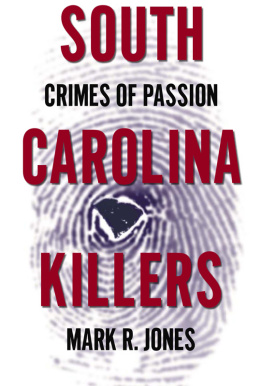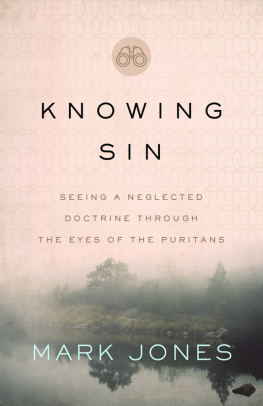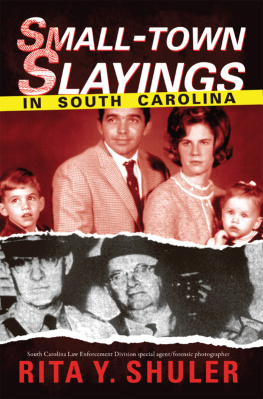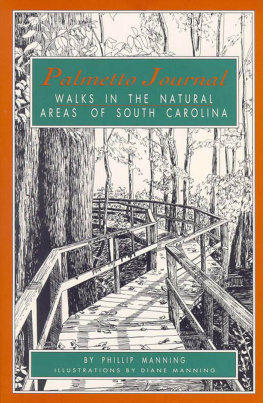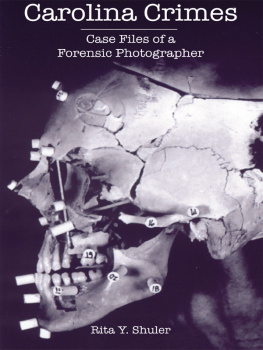

Published by The History Press
Charleston, SC 29403
www.historypress.net
Copyright 2007 by Mark R. Jones
All rights reserved
Cover design by Marshall Hudson.
First published 2007
e-book edition 2012
ISBN 978.1.61423.360.2
Library of Congress Cataloging-in-Publication Data
Jones, Mark R. (Mark Rowell), 1959
South Carolina killers : crimes of passion / Mark Jones.
p. cm.
Includes bibliographical references.
print edition ISBN: 978-1-59629-395-3 (alk. paper)
1. Murder--South Carolina--Case studies. 2. Murder victims--South
Carolina--Biography. 3. Capital punishment--South Carolina. I. Title.
HV6533.S6J65 2007
364.15230922757--dc22
2007036997
Notice: The information in this book is true and complete to the best of our knowledge. It is offered without guarantee on the part of the author or The History Press. The author and The History Press disclaim all liability in connection with the use of this book.
All rights reserved. No part of this book may be reproduced or transmitted in any form whatsoever without prior written permission from the publisher except in the case of brief quotations embodied in critical articles and reviews.
Visit us at
www.historypress.net
Contents
Introduction
As Long As We Are Able
We owe respect to the living; to the dead we owe only the truth.
Voltaire
What you hold in your hand is a collection of murder stories in South Carolina that spans one hundred years1903 to 2003. So, lets talk about murder.
I remember an old joke I learned in Sunday school. It went like this: How long did Cain hate his brother? Answer: As long as he was able.
Ever since Cain killed Abel in the Garden of Eden, humans have been horrified and fascinated with murder. And the first murder was a good one. The two brothers fought over Gods rejection of Cains sacrifice to the Lord, and His acceptance of Abels. As they struggled, Abel, who was stronger, physically defeated Cain, and then mercifully spared his life. As soon as Abel turned his back, however, Cain attacked with a stone, killing his brother in cold blood.
That pretty much sums up the history of humanity and homicide. Humans have always killed one another, and other humans will always be curious to know about it. Look at all the books written about murderfrom the Agatha Christiestyled genteel murders, to the gritty, hard-core, matter-of-fact killings in Andrew Vachsss gritty noir novels, to the gruesome icy detachment of Bret Eaton Elliss American Psycho, to the thousands of true-crime nonfiction books, like In Cold Blood.
And then you get into television and motion pictures. It seems more than half the TV programs have always been crime oriented. Think of all the cop shows, from the methodical Dragnet to the more realistic Hill Street Blues and CSI. Then there are the courtroom heroics of Perry Mason and Matlock, and the world-weary private detectivetake your pick from about twenty thousand of them: Magnum P.I., The Rockford Files, Mike Hammer, etc.
The point is, homicide is hot. It always has been and always will be. The two most famous murder cases in American history happened 102 years apartthe 1892 murder of Andrew and Abby Borden, and the 1994 murder of Nicole Brown Simpson and Ronald Goldman. In both cases, the accused was related to the victimsLizzie the daughter, and O.J., the ex-husband. The two cases have so transcended American culture that the accused murderers have entered that pantheon of celebrities known only by one name, probably because of their acquittal and the public perception that both Lizzie and O.J. got away with it.
One of the most interesting times in Southern history was the period after the War Between the States, called Reconstruction. Even if the original concept of Reconstruction was good, in application it was corrupt, violent and heavy-handed. Reconstruction laid the groundwork for the Jim Crow era in the South and created a legacy of bitterness that still manifests itself in many ways, such as low-quality public education and several generations of government-dependent citizens. It has also perpetuated a valley of racial division on both sides that is responsible for the caustic attitude of if you disagree with me, you must be evil or racist. Not just a different opinion, but evil! Unfortunately, too many of the murder stories contained in this volume have a racist element at their core.
In 1993, the murder rate in the United States was 9.5 per 100,000. In Louisiana, it was 20.3. By contrast, in 1900, Edgefield County, South Carolina, had a murder rate of 30.5 per 100,000, a higher rate of carnage than medieval England. Two of the stories in this volume have their roots in Edgefield County.
There were some stories I obviously had to include, like the Susan Smith case that became a national tragedy and the sad story of George Stinney, age fourteen when he was executed by South Carolina. Other stories I chose for the most obvious reasonsthey are interesting and serve as cautionary tales.
Some of the names of victims and family members have been changed for privacy purposes.
Until next time
Chapter One
Murder in Broad Daylight (1903)
Political corruption is a common thread that runs throughout the history of mankind. At the beginning of the twentieth century, South Carolina did not take a back seat to anyone as far as corruption among politicians, as this story illustratesthe murder of a newspaper editor by the second highest elected official in South Carolina, who walked away a free man.
JANUARY 15, 1903. It was just after noon in Columbia, South Carolina, and the editor of the State newspaper, Narciso Gener Gonzales, was walking home for lunch. Gonzales was the son of General Ambrosio Jose Gonzales, a Cuban revolutionary general who opposed Spanish rule. His mother was Harriet Rutledge, the daughter of William Elliott, a wealthy South Carolina rice planter, state senator and writer.
N.G. Gonzales had gained national renown during the Spanish-American War. His coverage of the famous charge up San Juan Hill by Teddy Roosevelt and his Rough Riders helped cement that incident in the American psyche.
It was a cold, blustery day in Columbia, and Gonzales was walking with his head down against the cold wind. His shoulders were hunched and his hands were thrust deep in his coat pockets. As he turned the corner of Main and Gervais Streets, he met lame duck Lieutenant Governor Jim Tillman and two state senators on the sidewalk.
Tillman approached the editor and said, Good morning. I got your message. He then pulled out a German Luger and shot Gonzales in the stomach.
A nearby policeman arrested Tillman. Gonzales was carried back to his office in the State building half a block away, and then to the hospital. The Cuban editor lingered unconscious for several days, but contracted peritonitis (blood poisoning) from the gut shot that had ruptured his intestine.
JANUARY 19, 1903. N.G. Gonzales died and two days later, most of the businesses in Columbia closed in honor of the man who had started the State newspaper in opposition to the politics of his murderers uncle, Governor Ben Pitchfork Tillman. Several hundred people braved a cold, rainy day to pay tribute to the fallen editor.
JANUARY 21, 1903. A coroners inquest determined that Tillman had shot and murdered Gonzales, and a trial date was set for September. Tillmans jail cell was soon furnished with books, comfortable chairs and other accoutrements. Meanwhile, the powerful Tillman political machine began to maneuver and manipulateanything to get the results they desired.
Next page
